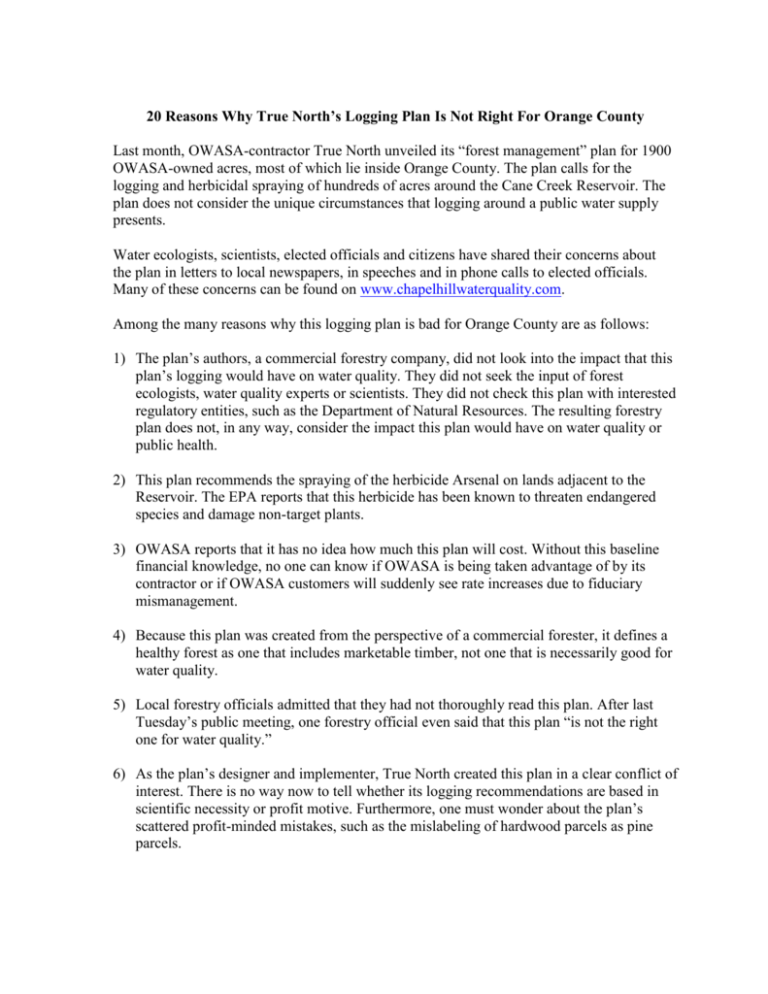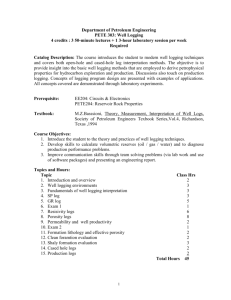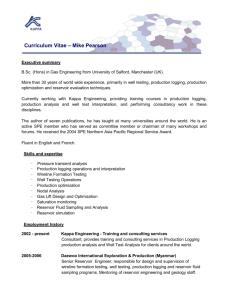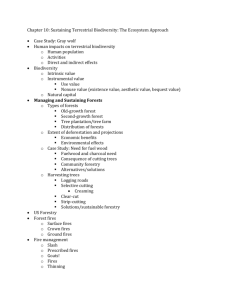20 Reasons
advertisement

20 Reasons Why True North’s Logging Plan Is Not Right For Orange County Last month, OWASA-contractor True North unveiled its “forest management” plan for 1900 OWASA-owned acres, most of which lie inside Orange County. The plan calls for the logging and herbicidal spraying of hundreds of acres around the Cane Creek Reservoir. The plan does not consider the unique circumstances that logging around a public water supply presents. Water ecologists, scientists, elected officials and citizens have shared their concerns about the plan in letters to local newspapers, in speeches and in phone calls to elected officials. Many of these concerns can be found on www.chapelhillwaterquality.com. Among the many reasons why this logging plan is bad for Orange County are as follows: 1) The plan’s authors, a commercial forestry company, did not look into the impact that this plan’s logging would have on water quality. They did not seek the input of forest ecologists, water quality experts or scientists. They did not check this plan with interested regulatory entities, such as the Department of Natural Resources. The resulting forestry plan does not, in any way, consider the impact this plan would have on water quality or public health. 2) This plan recommends the spraying of the herbicide Arsenal on lands adjacent to the Reservoir. The EPA reports that this herbicide has been known to threaten endangered species and damage non-target plants. 3) OWASA reports that it has no idea how much this plan will cost. Without this baseline financial knowledge, no one can know if OWASA is being taken advantage of by its contractor or if OWASA customers will suddenly see rate increases due to fiduciary mismanagement. 4) Because this plan was created from the perspective of a commercial forester, it defines a healthy forest as one that includes marketable timber, not one that is necessarily good for water quality. 5) Local forestry officials admitted that they had not thoroughly read this plan. After last Tuesday’s public meeting, one forestry official even said that this plan “is not the right one for water quality.” 6) As the plan’s designer and implementer, True North created this plan in a clear conflict of interest. There is no way now to tell whether its logging recommendations are based in scientific necessity or profit motive. Furthermore, one must wonder about the plan’s scattered profit-minded mistakes, such as the mislabeling of hardwood parcels as pine parcels. 7) This plan recommends the clear-cutting of mixed hardwood areas and replacing them with loblolly pine monocultures. This switch converts the local, indigenous forest with pine tracts which can be logged into perpetuity. This is bad for forest environments throughout the entire County. It makes all area forests more susceptible to catastrophic disease, such as root rot, and pest attacks, such as pine beetle infestations. 8) The plan calls for clear-cutting of hundreds of acres adjacent to the Reservoir water’s edge, which will have huge impacts on drinking water quality. Scientists have documented clear cuts near watersheds to have the following effects: increased water temperatures due to a decrease in woodland shade increased algae bloom growth due to warmer waters increased sedimentation due to ground-cover disturbance and controlled burning increased illegal dumping, poaching and trespassing because of new logging road construction into the Reservoir lands increased danger of brush fires because of tree-top debris piles increased fecal-pathogens in water supplies because of new grazing areas increased chance of destabilized ecosystems because of overstressed of riparian buffers destabilized hyrograph because of increased in pine monocultures decreased natural filtration abilities because of the removal of oldgrowth canopied trees and the removal leaf litter through controlled burning decreased ability for forests to absorb carbon dioxide and offset global warming’s effects decreased age diversity, and resilience, in all of the County’s forests 9) Erosion problems and sedimentation build-ups can be expected for three to five years following a clear cut. By making multiple entries into the same properties, this plan ensures that sedimentation problems will continue in the Reservoir waters indefinitely. 10) This plan goes against OWASA’s mission and the company’s later missives which advise the water company to carry out only those actions which maintain or increase water quality. Past OWASA Board members instrumental in the acquisition of Cane Creek lands are horrified that these parcels, which were purchased for watershed protection, are now being logged. 11) Studies show that for every 10 percent of forest land clear-cut around a watershed, there is a 20 percent increase in chemical treatment costs at the water facility. OWASA customers stand to lose money in the long run due to an increased need for chemical intervention and treatment. 12) This plan calls for roughly 200 logging projects in the watershed area, all of which are around the homes and roads of rural residents. The sheer magnitude of the current plan is a threat to public health, local infrastructure and public safety. 13) By decreasing species diversity within the Reservoir’s woodlands, the plan makes the forests less able to weather droughts, disease and ice storms, including 21st century environmental fluctuations. 14) This plan does not consider the effects that such widespread logging would have on local habitats. The state Wildlife Commission usually does an inventory on its species populations. That best practice was not carried out here. Furthermore, this plan does not consider the growing problem of forest fragmentation for local species. The Cane Creek Reservoir represents one of the last few areas in the County providing a deep forest habitat hospitable to Bald Eagles, Flying Squirrels and more. 15) This plan came into being without the consultation of a scientific or citizen advisory board, which could have mitigated the negative impacts on water quality, forest habitats and rural residents. 16) OWASA did not do its due diligence in contacting concerned landowners before its November 30th public meeting. Many rural residents with land bordering OWASA lands were not contacted at all. 17) The current plan adds insult to injury for the local rural residents who live in the watershed area. After OWASA all-but bullied land owners during the construction of the Reservoir, now local rural residents face lifetimes of noise pollution on an industrial scale. 18) The company that designed this plan, True North, is the same one that clear-cut OWASA’s Wildlife Mitigation Tract near Buckhorn Road. This site, which was originally designed to offset the displacement of animals from the Reservoir construction, is a scar on the County’s conscience. The site, off Martin Road, which was filled with towering red and white oaks, is now a vast moonscape of compacted clay inhospitable to any living creature. 19) The plan currently professes to use Jordan Lake rules for riparian buffers. These rules are the bare-minimum, providing only 50’ clearance to the water’s edge. Orange County’s ordinances require 80’ buffers for development and the Clean Water Trust Fund requests 300’ buffers. 20) The plan does not consider this plan’s concordance –or dissonance—with County growth. There is no mention of how this plan’s extensive logging helps or detracts from the County’s planned growth patterns. If anything, OWASA, as one of the largest land owners in the County, should be considering ways to increase woodlands to mitigate the ill-effects of private development and population growth.











